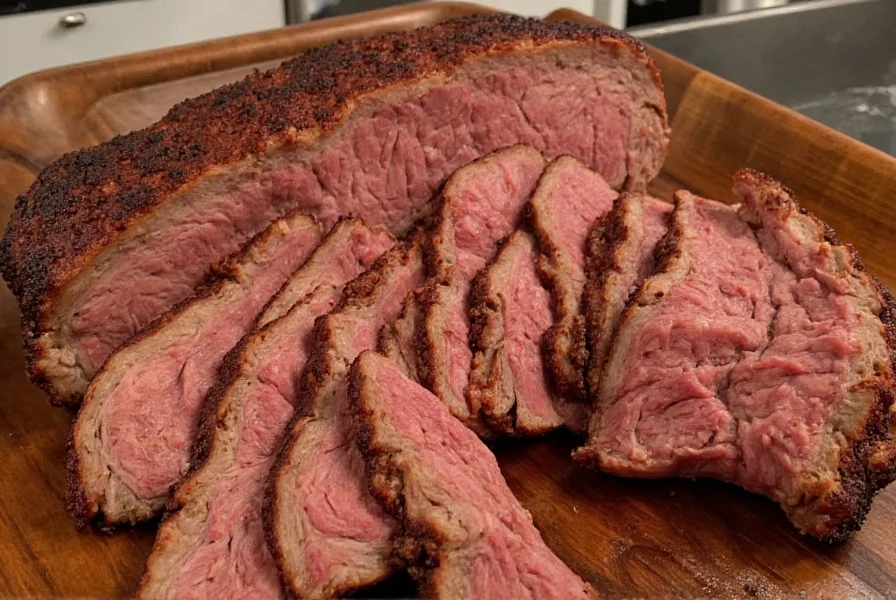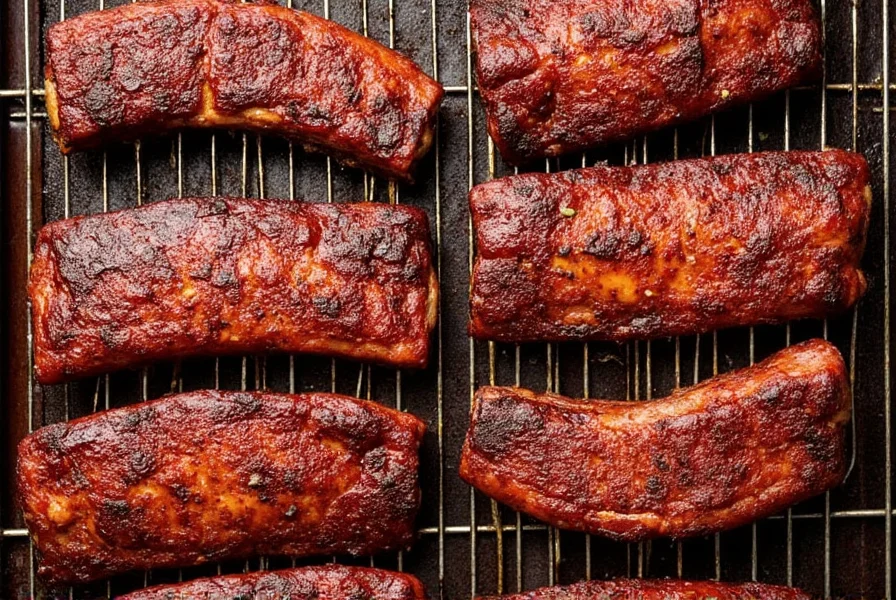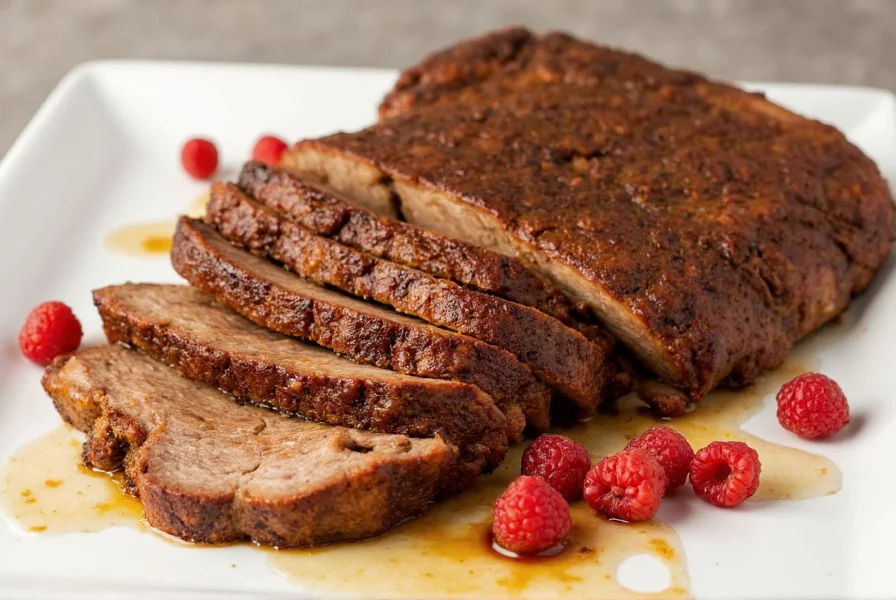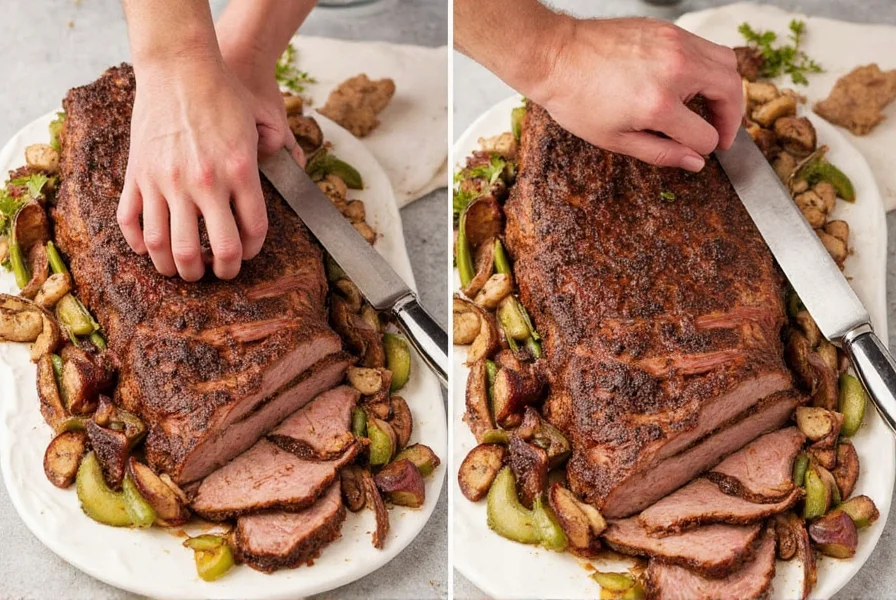Master the perfect oven roast brisket with this step-by-step recipe. Our guide includes precise spice measurements, cooking times, and pro tips for tender, flavorful results every time. Whether you're a beginner or experienced cook, you'll learn how to transform a tough cut into a show-stopping dish.
Ingredients
- 5-6 lb beef brisket (flat cut, well-marbled)
- 2 tbsp coarse sea salt
- 1 tbsp freshly ground black pepper
- 1 tbsp smoked paprika
- 1 tbsp ground cumin
- 1 tbsp garlic powder
- 1 tsp onion powder
- 1 tsp dried thyme
- 2 tbsp olive oil
- 1 cup beef broth
Step-by-Step Cooking Instructions
- Prep the Brisket: Pat the brisket dry with paper towels. Trim excess fat to 1/4-inch thickness for optimal texture.
- Mix Spice Rub: Combine salt, black pepper, smoked paprika, cumin, garlic powder, onion powder, and thyme in a bowl. Rub evenly over all sides of the brisket, pressing gently to adhere.
- Preheat Oven: Set oven to 275°F (135°C). Place a rack in the lower third of the oven.
- Roast: Place brisket fat-side up in a roasting pan. Pour beef broth into the pan. Cover tightly with foil. Roast for 6-8 hours until internal temperature reaches 195°F (90°C) at the thickest part.
- Rest: Remove from oven. Tent loosely with foil and rest for 30-60 minutes before slicing against the grain.
| Spice | Amount per 5lb Brisket | Role in Flavor |
|---|---|---|
| Smoked Paprika | 1 tbsp | Provides authentic barbecue smokiness without a smoker |
| Coarse Sea Salt | 2 tbsp | Enhances meat's natural flavor and helps tenderize |
| Black Pepper | 1 tbsp | Adds subtle heat and depth to the spice crust |
| Garlic Powder | 1 tbsp | Creates savory umami base without burning |
| Cumin | 1 tbsp | Warm earthy notes that complement slow cooking |

Pro Tips for Success
- Temperature Check: Use a meat thermometer to confirm internal temperature. Brisket is done when it reaches 195°F (90°C) and probes like butter.
- Resting is Critical: Never skip resting. This allows juices to redistribute, preventing dryness when sliced.
- Slicing Technique: Always slice against the grain for maximum tenderness. Look for the muscle fibers and cut perpendicular to them.
Frequently Asked Questions
What's the ideal oven temperature for roast brisket?
275°F (135°C) is ideal. Lower temperatures (225°F) require longer cooking but yield more tender results, while higher temperatures (300°F+) risk drying out the meat. Consistent low heat breaks down connective tissues without toughening the meat.
Can I use fresh garlic instead of powder?
Fresh garlic burns easily at high heat. For this recipe, garlic powder is preferred as it infuses flavor without burning. If using fresh, mince finely and mix with oil before rubbing to prevent direct contact with high heat.
Why does my brisket turn out tough?
Toughness usually means undercooking or incorrect slicing. Brisket needs to reach 195°F+ to break down collagen. Always slice against the grain—cutting with the grain creates chewy, stringy meat. If it's still tough, return to oven for 30-minute increments until probe-tender.

Equipment Recommendations
- Heavy-Duty Roasting Pan: Essential for even heat distribution. Look for stainless steel with high sides to contain drippings.
- Instant-Read Thermometer: Critical for precision. We recommend the ThermoPro TP20 for accurate internal temperature checks.
- Sharp Carving Knife: A 10-inch flexible blade makes slicing against the grain effortless.












 浙公网安备
33010002000092号
浙公网安备
33010002000092号 浙B2-20120091-4
浙B2-20120091-4